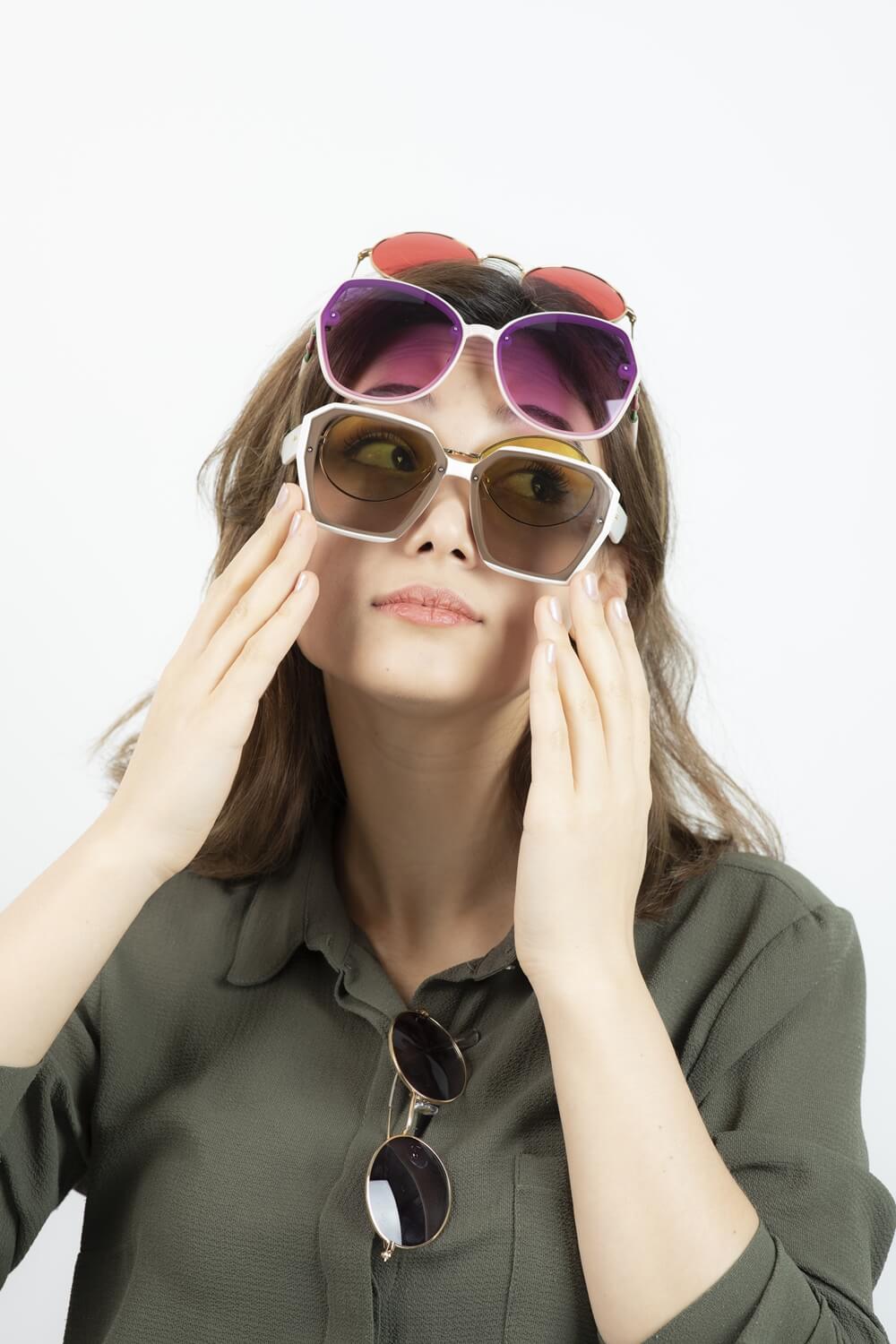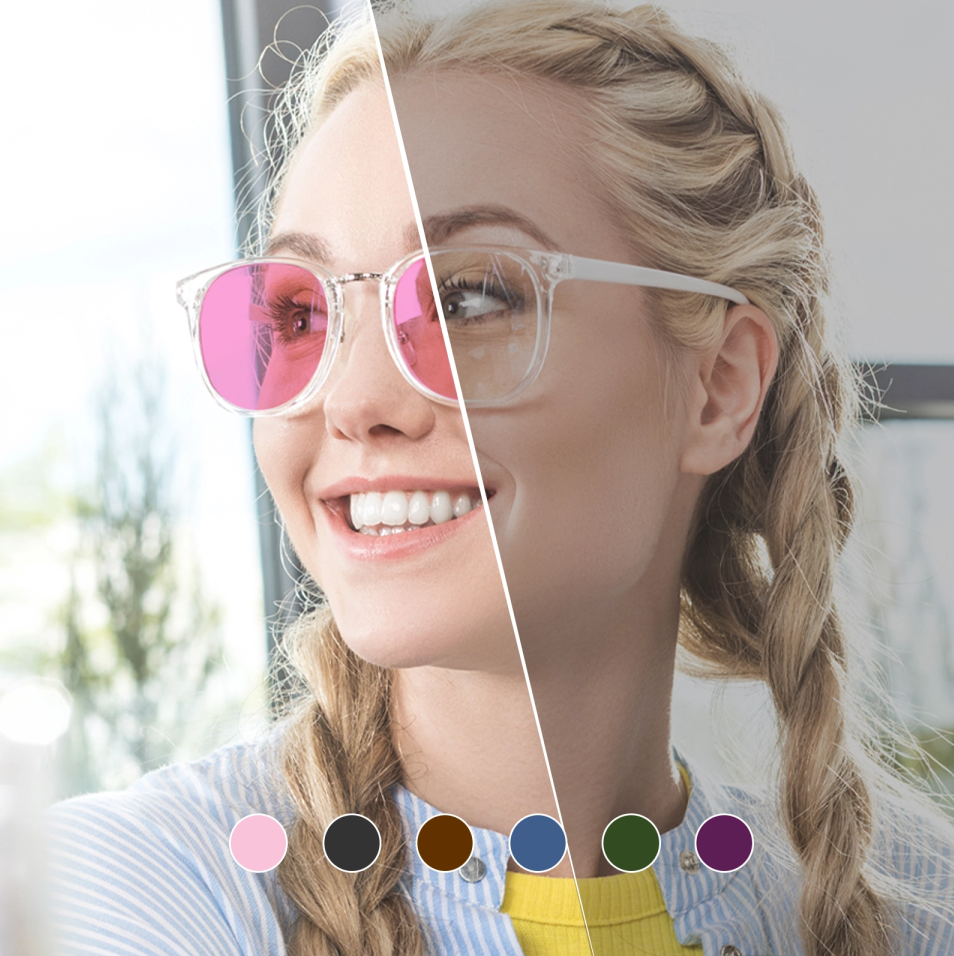Choosing the right lenses for eye protection and visual comfort is crucial. With the wide array of options available, it can be challenging to determine which type is best suited for your needs. Keep reading to explore the differences between photochromic and polarized lenses, helping you make an informed decision. Let's delve into the fascinating world of eyewear and discover which type of lens is the perfect fit for you.
Understanding Photochromic Lenses
Photochromic lenses are a marvel of modern eyewear technology. These lenses are designed to adapt to changing light conditions, providing you with optimal visual clarity. How do they work? Photochromic lenses contain molecules that darken in the presence of UV light, shielding your eyes from harmful rays. When UV light diminishes, they gradually return to their clear state. This adaptability makes photochromic lenses ideal for everyday use, as they effortlessly transition between indoor and outdoor environments.
When it comes to convenience, photochromic lenses truly shine. There's no need to switch between different pairs of glasses as you move between environments. Whether you're stepping out into bright sunlight or entering a dimly lit room, photochromic lenses seamlessly adjust to ensure your eyes are comfortable and protected! With their ability to block 100% of UVA and UVB rays, photochromic lenses provide more than just a stylish accessory – they are a valuable investment in eye health.
Unveiling Polarized Lenses
Polarized lenses offer a different approach to eye protection and visual enhancement. These lenses are designed to reduce glare caused by light reflecting off surfaces such as water, snow, or roads. The special filter embedded within polarized lenses blocks horizontal light waves, allowing only vertical light to pass through. By eliminating glare, polarized lenses enhance visual clarity and reduce eye strain, especially in high-glare environments.
Polarized lenses are particularly beneficial for outdoor activities, such as driving, fishing, or skiing. They provide sharper contrast, making objects and details appear more defined. If you frequently engage in sports or spend time near water, polarized lenses can significantly improve your visual experience.
However, it's important to note that polarized lenses may affect the visibility of certain digital screens, such as smartphones or GPS devices.
The Differences and Similarities
While both photochromic and polarized lenses offer valuable eye protection, their distinctions make them suitable for different purposes and environments. Let's explore these differences in more detail to help you make an informed decision.
Photochromic lenses are designed to adapt to changing light conditions, making them incredibly versatile for everyday use. Whether you're stepping out into the bright sunlight or entering a dimly lit room, these lenses seamlessly adjust their tint to provide optimal visual comfort. Their ability to transition between varying light intensities ensures that your eyes remain protected and strain-free throughout the day. This adaptability makes photochromic lenses a popular choice for those seeking convenience and versatility.
On the other hand, polarized lenses prioritize glare reduction and enhanced visual clarity in specific situations. They contain a specialized filter that blocks horizontal light waves, which are primarily responsible for causing glare. By eliminating glare, polarized lenses enhance contrast and definition, allowing you to see more clearly, especially in high-glare environments such as when you're driving, participating in water sports, or spending time in snowy landscapes. If you frequently engage in these activities, polarized lenses can greatly enhance your visual experience.
Despite their distinct functionalities, photochromic and polarized lenses do share common ground. Both types of lenses offer essential UV protection, effectively shielding your eyes from harmful ultraviolet rays. Prolonged exposure to UV radiation can lead to various eye conditions, including cataracts and macular degeneration. By wearing either photochromic or polarized lenses, you can significantly reduce the risk of UV-related damage and prioritize your long-term eye health.
Moreover, both photochromic and polarized lenses contribute to overall eye comfort. Photochromic lenses adapt to changing light conditions, ensuring that your eyes are never strained by excessive brightness or squinting in dimmer settings. Polarized lenses, with their glare-reducing properties, minimize eye strain caused by intense reflected light, making your visual experience more comfortable and enjoyable. By reducing glare-related discomfort, both lens types enhance your visual performance and reduce eye fatigue.
When it comes to choosing between photochromic and polarized lenses, it ultimately depends on your personal preferences, lifestyle, and the specific activities you engage in. Consider factors such as how frequently you transition between indoor and outdoor environments, your exposure to glare-prone situations, and the level of UV protection you require.
Remember, consulting with an eye care professional can provide additional guidance tailored to your specific vision requirements.

Choosing the Right Lens for Your Needs
Selecting the right lens type depends on various factors unique to each individual. Consider your lifestyle, budget, and specific eye care needs. If you're someone who frequently transitions between indoor and outdoor settings and prefers the convenience of a single pair of glasses, photochromic lenses may be the ideal choice. They offer flexibility and protection throughout your day, adapting to your surroundings effortlessly.
If you're an outdoor enthusiast, especially involved in activities with high glare potential, polarized lenses are likely to enhance your visual experience. They provide superior clarity and minimize eye strain in bright environments. However, if you frequently use digital screens, you may want to consider the potential impact of polarized lenses on-screen visibility.
Introducing Our Photochromic Sunglasses
At CliCliMe, we understand the importance of finding the perfect eyewear solution. Our photochromic sunglasses combine the best of both worlds: convenience and protection. With our high-quality lenses, you can seamlessly transition between indoor and outdoor environments, all while enjoying the benefits of UV protection. Our collection is designed with your comfort and style in mind, ensuring that your eyes are well-cared for without compromising your personal aesthetic.
Discover the difference our photochromic sunglasses can make in your daily life. Visit our website to explore our range of stylish options and find the perfect fit for your unique needs.
We're confident that our photochromic sunglasses will become your go-to eyewear companion this summer, providing you with optimal eye protection and visual comfort.
Final Thoughts
When it comes to photochromic vs. polarized lenses, there is no definitive "better" option. It all boils down to individual preferences, lifestyles, and specific activities. Photochromic lenses excel in adaptability, making them suitable for everyday use, while polarized lenses prioritize glare reduction and enhanced visual clarity, making them ideal for outdoor activities.
Consider your needs, try out different lens types, and make an informed decision to ensure your eyes are well-protected. Remember, investing in high-quality lenses is an investment in your long-term eye health and comfort.
If you're looking for the perfect pair of photochromic sunglasses, we invite you to explore our collection at CliCliMe. And, don't miss out on the latest news and exclusive offers!! Sign up for our newsletter to stay updated on eyewear trends, eye health tips and special promotions.












